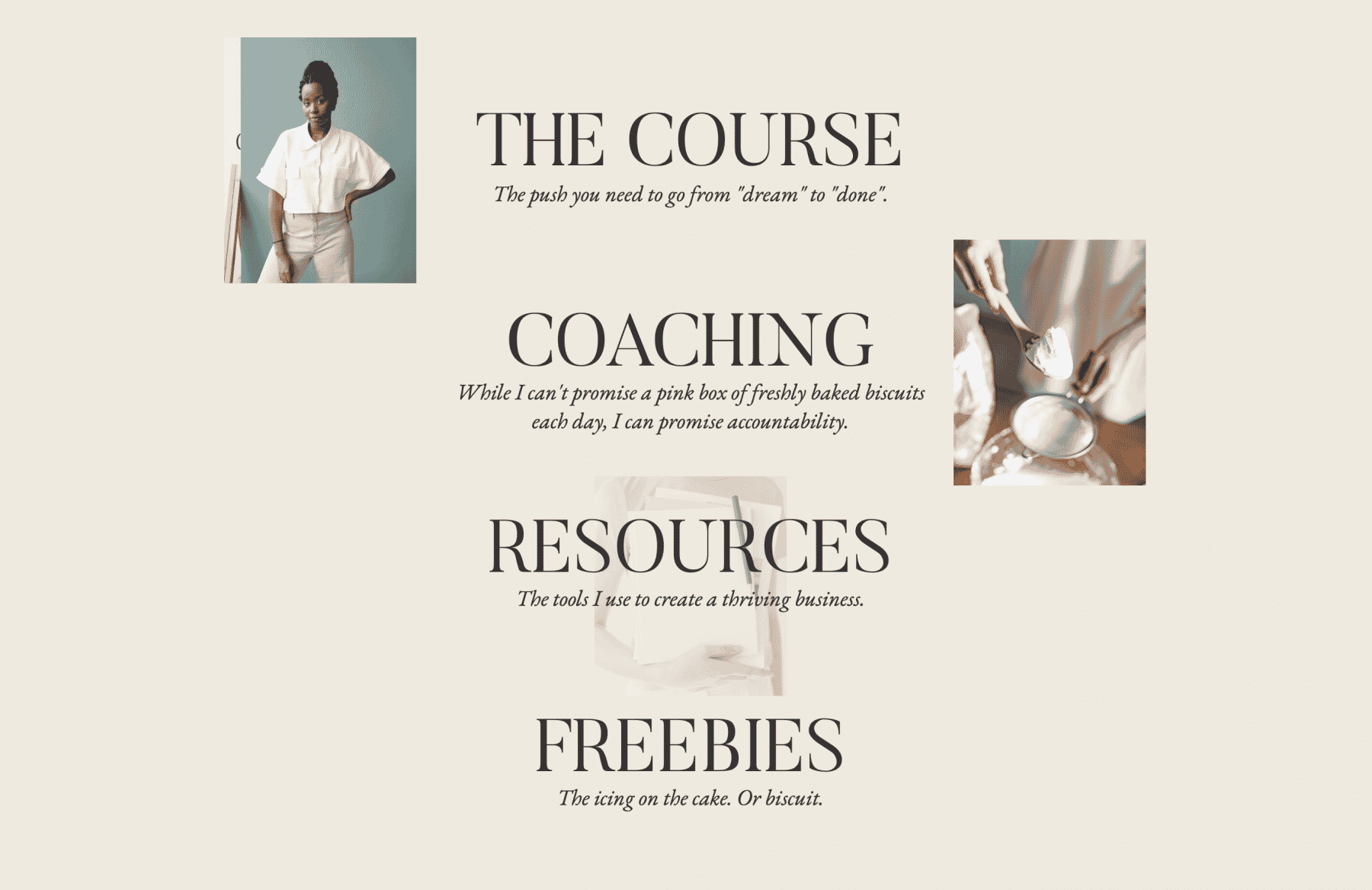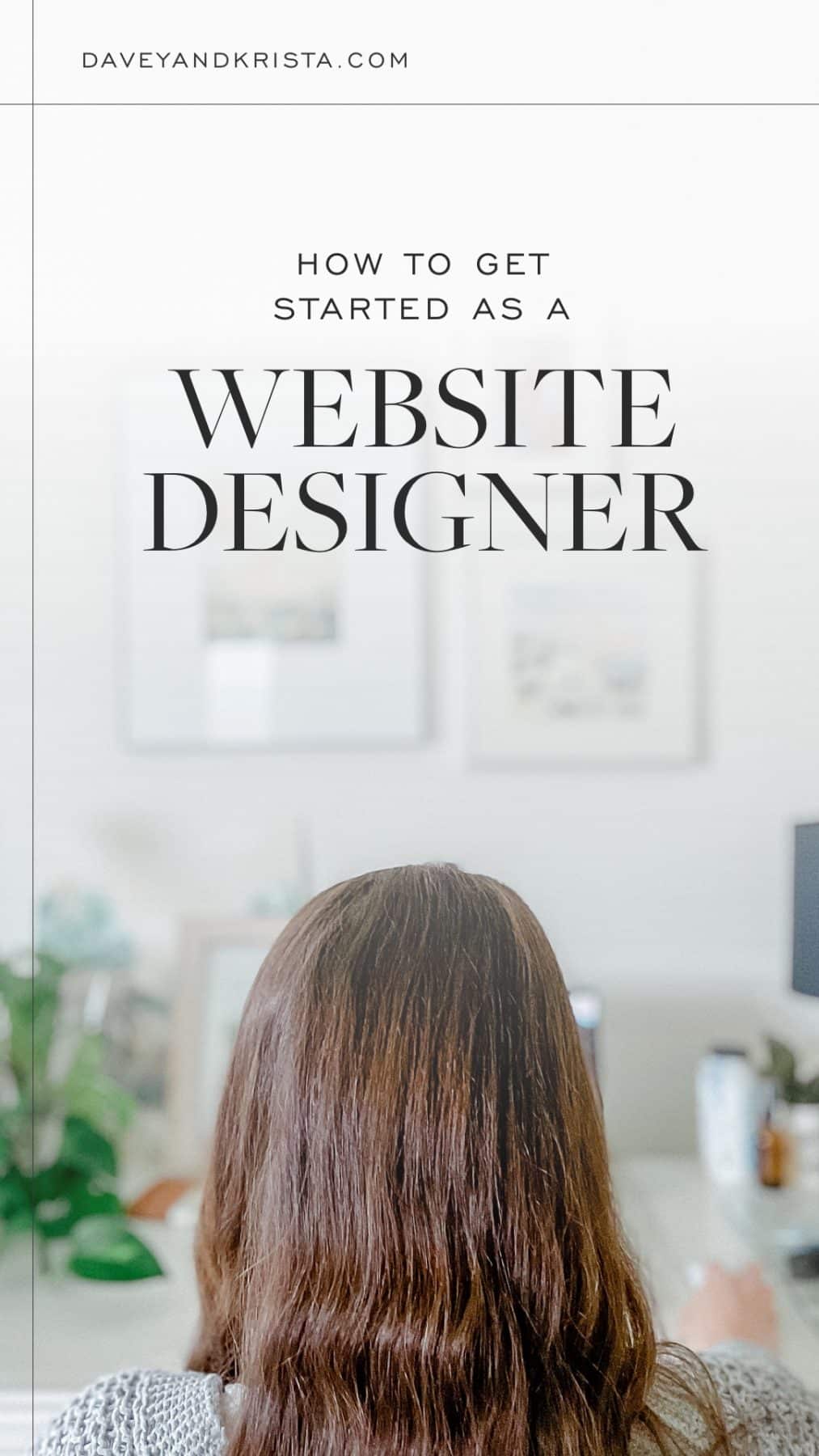Today’s topic is something we don’t often share about, but it’s something we’re asked about fairly frequently: how do I get started as a website designer?
Web designers are more important than ever. And unlike in the days when I was becoming a designer, I think it’s entirely possible to become a web designer without a college degree.
I read the other day that the shopping mall near my hometown is for sale. The recently-renovated, perfectly situated mall is still in incredible condition, but times are changing. We live in a world where more and more businesses are opting for online-only experiences. In fact, if a business has no online presence at all (or if it’s online presence dates back to the dial-up days), we question its reputation.
So how do you do it? Listen to the podcast episode or follow along with the outline below:
1. Business Setup (unless you want to work for a company)
If your goal is to run your own company, there are a few logistics that you’ll want to cover before you dive into the specifics of building a website. If your goal is to work as a designer for an agency, you can skip this step.
- Choose your business name. Make sure it’s unique – especially within your industry. Most states offer name registration databases and you can also search the national trademark database.
- Register your business (Sole proprietorship, LLC or S Corp). Check with your accountant and/or a lawyer about what each entails.
- Set up any other local business formations / registrations.
- Secure your website URL and social media handles. Make sure that they match your business name, that they are easy to remember and consistent. If you’re going to call your business Little Bear Design Co, make sure you can also grab littlebeardesign.com and the social media handles @littlebeardesign.
2. Hardware + Software
One of the great things about website design is that compared to something like photography, you need relatively little equipment in order to get started. You’ll likely have more subscriptions down the line, but these are the one’s you’ll need to get started.
- A computer (duh). We use Macbook Pros with external monitors.
- An adobe Creative Cloud monthly subscription. Photoshop and Illustrator will likely be the most used/beneficial
- We use Sketch to mock-up our website designs.
- Something for contracts and invoices like Dubsado, which is what we use.
- Depending on the types of websites you are going to build, you may need a website host account where you can set-up a staging environment and/or a subscription to the website platform you’re going to build on (Showit, Wix, Squarespace, etc.). If you’re only going to build on something like Showit, then you would only need the subscription to Showit.

3. Learn the principles of Design
While you don’t need a design degree in order to be a website designer, it is important to learn the principles of design. Understanding how different components work together to create a functional and beautiful website makes all the difference.
It’s the difference between someone who can make box cupcakes vs. a French pastry chef who understands the chemistry behind the ingredients.
If you understand how layout & composition, color, texture, typography and imagery come together to form a design, you’re going to have a much easier time creating websites.
There seems to be a bit of a gap in the area of real design + websites. While I found plenty of courses and books that teach code, I didn’t see many courses teaching how to create truly beautiful websites.
My advice is to start with design books. Learn the principles of design. Then apply them to the web.
General Design Books
This isn’t a book, but Practical Typography is a great intro to type.
4. Learn the Basics of HTML + SEO
There was a time when launching a website without knowing how to code was impossible. When I first learned how to create WordPress websites, I read books to teach myself HTML, CSS and PHP. I built a WordPress theme and then used CSS to customize it for my clients.
These days, there is an easier way. Most websites are built with interactive website builders like Showit and Elementor. These programs make it easy for both clients and designers to customize sites without code.
98% of the time, you can create the website you want without any code. But there will be times when certain elements need to be targeted with CSS or HTML. For those circumstances, it’s helpful to learn the basics of CSS. Yes, you can Google just about anything when it comes to code, but it’s important to actually know what you’re adding (lest you cause anything else to break).
The same is true when it comes to SEO. While you don’t need to be an SEO expert, you’ll be able to provide so much more value for your clients if you can do some basic optimizations.
To learn HTML, I recommend grabbing the latest edition of this book (or a similar one), that you can find.
To learn SEO, check out our Showit SEO Course or Moz.
5. Choose a platform and learn everything you can about building on it.
We’ve experimented with a lot of platforms, but after more than a decade in business, we still believe that WordPress and Showit are the best options for most websites. WordPress, for instance, can manage everything from e-commerce shops (like ours) to blogs and portfolios. It is free and there are an endless amount of plugins that can be added on to customize your site. Within the WordPress realm, there are several different editors that can be added to make customizing sites a breeze. Again, we’ve played with a lot of them, but we think Showit and Elementor are the best.
Showit is another great option because it offers a lot of creative control for designers while being easy enough for clients to use. We’ve found it is usually easier for our clients to manage and make updates to a Showit website versus a WordPress website.
Learn more about the differences between Showit and WordPress/Elementor »
- Designing with Showit
- Start with their free, “simple” template.
- Or buy a design from another designer (like us). Just keep in mind that you’ll need to keep their design credit and that you can only use the design on one site. If you go this route, most people adjust the credit to say “Design by Davey and Krista, Customized by Little Bear Design Co.”
- They provide a lot of literature about building a website on their platform.
- Their custom support is top notch.
- Designing with WordPress (Elementor)
- Elementor also provides great resources for building on their platform. This post is a great place to begin.
- Or you can also start with a design from another designer as long as you do not remove the original design credit.
6. Build your own website on that platform
If you’ve spent the last few weeks or months studying website design, you’re likely itching to get started on your first project.
We recommend starting with your own website first. Not only is this going to be a great way to learn and practice (without the pressure of creating something for a real client), but it also serves the purpose of creating an online home for your business.

7. Portfolio Build
Before you can start marketing your services, you’ll want to have a small portfolio of projects you have worked on. Consider helping a few friends out in exchange for a design credit on their site + testimonial. Before you can get others to pay for your services, you’re going to need to prove that you’re good at what you do and that you can get results for others. Most likely, it’s going to take some low budget or no budget projects in order to start building up your portfolio.
One you’ve built several sites, you can start to think about a niche.
We discuss each of these points in more detail in the podcast version of this post, so check there first if you’re interested in learning more.
Have additional questions you want answered? Drop them in the comments below!

VIEW THE COMMENTS
Add A Comment